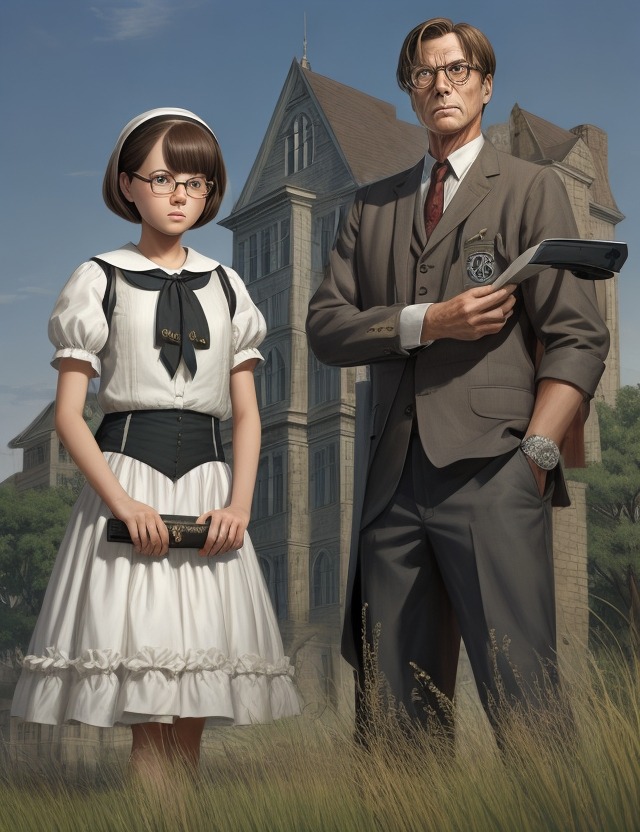In the realm of timeless literary classics, Harper Lee’s poignant masterpiece “To Kill a Mockingbird” holds an unparalleled place. This enduring novel, set against the backdrop of 1930s Alabama, delves deep into the prevalent racial injustices of the era, provoking reflection on the themes of compassion, morality, and the destructive power of prejudice. As you embark on this literary journey, allow us to guide you through the rich tapestry of characters and events that unfold in this remarkable tale.
Whether you are a seasoned reader revisiting the beloved narrative or a newcomer curious to unravel its profound significance, this article will serve as your guide, offering a comprehensive summary while unraveling the hidden depths and timeless relevance of Lee’s masterwork. Get ready to be engrossed, as we unveil the captivating story of “To Kill a Mockingbird” and explore how the novel continues to resonate with readers decades after its initial publication.
To Kill a Mockingbird Full Book Short Summary
Welcome, young readers, to the charming and enchanting world of “To Kill a Mockingbird” by Harper Lee. Through the eyes of Scout Finch, a spirited and curious young girl, we embark on a transformative journey in the fictional town of Maycomb, Alabama during the turbulent 1930s. This timeless and Pulitzer Prize-winning novel tells a poignant and important story about justice, prejudice, and the triumph of human goodness.
Part I: Innocence Lost
Our adventure begins as Scout introduces us to her family and the sleepy town of Maycomb. Scout lives with her older brother Jem, her wise and fiercely independent father, Atticus Finch, and their kind-hearted housekeeper, Calpurnia. Together, they navigate the challenges and joys of childhood while their father, a noble lawyer, defends a wrongly accused black man named Tom Robinson.
Chapter 1: Meet Scout and Jem
Scout and Jem are introduced to their imaginative neighbor, Dill, and the trio embarks on a quest to unravel the mystery surrounding Boo Radley, a recluse who lives next door. They embark on daring missions to catch a glimpse of him, sparking their fascination with the unknown.
Chapter 2-7: The School and the Radley Mystery
Scout begins her first year of school and faces the prejudices and expectations of Maycomb’s adults. However, she discovers a new admiration for her patient and knowledgeable teacher, Miss Maudie. Meanwhile, Boo Radley, rumored to be a mysterious and dangerous figure, captures the children’s imaginations.
Chapter 8-11: Snow, Presents, and Scary Nights
Winter arrives, bringing unexpected snowfall to Maycomb. Scout and Jem build a snowman with mysterious help and find small gifts hidden inside a tree trunk. However, their blissful winter is soon interrupted when Scout is forced to wear a cumbersome ham costume for a school play. On their way back, they are attacked in the dark by Bob Ewell, a vengeful racist.
Part II: Growing Up and the Trial
As Scout, Jem, and Dill grow older, they become more aware of the injustices and prejudices surrounding them. Maycomb is shocked when Atticus takes on the case of Tom Robinson, falsely accused of assaulting a white woman, Mayella Ewell. The trial becomes a pivotal moment in the children’s lives and in the history of Maycomb.
Chapter 12-14: Calpurnia and the Black Church
Scout and Jem accompany Calpurnia to her church in the black community, giving them a glimpse into the struggles faced by African Americans. Scout notices the warmth and unity of the congregation, prompting her to question the racial divide more deeply.
Chapter 15-18: The Trial Begins
The trial of Tom Robinson grips Maycomb, attracting national attention. Scout, Jem, and Dill sneak into the courtroom, observing the prejudice and ignorance that plague the proceedings. Their hero, Atticus, valiantly defends Tom and exposes the truth, but despite the clear evidence, the town’s deep-rooted racism prevails, leading to a devastating verdict.
Chapter 19-24: The Aftermath
The trial’s aftermath takes a toll on Scout and Jem’s faith in justice. Maycomb’s deeply entrenched racism is further revealed when Tom is tragically killed, attempting to escape from prison. Meanwhile, a vengeful Bob Ewell targets Atticus and his children, leading to a dramatic climax and an unexpected savior.
Part III: Lessons Learned
With the turbulent events of the trial behind them, Scout and Jem learn valuable life lessons about compassion, empathy, and the power of standing up for what is right.
Chapter 25-28: Halloween and Unmasking
During the town’s Halloween pageant, Scout and Jem find themselves in the dark, haunting streets, unaware they have an unexpected watcher. The encounter with their mysterious watcher and the terrifying chase that follows becomes a pivotal moment for Scout as she sees the world through Boo Radley’s eyes.
Chapter 29-31: Lessons of Empathy and Compassion
In the final chapters of this enchanting tale, Scout unfolds the story of Boo Radley, revealing the true depths of his kindness and humanity. Scout finally realizes the importance of empathy and walks Boo home, symbolizing her coming-of-age journey and the compassion that surpasses boundaries.
Conclusion:
“To Kill a Mockingbird” is a literary masterpiece that tackles important themes of racial prejudice, social injustice, and the power of empathy. Through Scout’s innocent perspective, readers are reminded of the need for compassion and equality in our own lives. Join Scout, Jem, and their father, Atticus, on this remarkable journey of self-discovery and learn valuable lessons that will stay with you forever.
To Kill a Mockingbird Key Theme
To Kill a Mockingbird, written by Harper Lee, is a timeless American classic that explores the themes of prejudice, justice, and the loss of innocence.
1. Prejudice: One of the central themes of To Kill a Mockingbird is prejudice. The book vividly portrays the deeply rooted racial prejudice in the small fictional town of Maycomb, Alabama, during the 1930s. The story follows Scout Finch, a young girl who observes the injustices faced by her father, Atticus, as he defends Tom Robinson, a black man falsely accused of raping a white woman. The novel exposes the destructive power of prejudice and its impact on society, as Scout and her brother Jem witness the injustice and cruelty inflicted upon the innocent.
2. Justice: Another key theme in To Kill a Mockingbird is the quest for justice. Atticus Finch, a moral and upright lawyer, strives to challenge the prevailing prejudice of Maycomb and seeks to defend Tom Robinson in court. Despite Atticus’ compelling arguments and the overwhelming evidence of Tom’s innocence, the racist nature of the town’s society ultimately prevents the delivery of true justice. The novel highlights the importance of fighting for justice even when it seems unlikely to prevail, as Atticus serves as a symbol of courage and moral integrity.
3. Loss of Innocence: The theme of the loss of innocence resonates throughout the book as Scout and Jem experience the harsh realities of a prejudiced society. Initially sheltered from the racial tensions and injustices, Scout and her brother are forced to confront these issues head-on as they witness the trial of Tom Robinson and the subsequent backlash from the community. This loss of innocence represents a coming-of-age journey for the children and underscores the moral complexities they encounter in their own community. The novel portrays the harsh reality that innocence is often shattered when confronted with the ugly truths of prejudice and injustice.
To Kill a Mockingbird remains a powerful and thought-provoking novel that continues to resonate with readers, reminding them of the destructive nature of prejudice, the importance of fighting for justice, and the painful loss of innocence in an unjust world.
To Kill a Mockingbird: Characters
1. Atticus Finch: A wise and noble father figure, Atticus is the moral compass of the story. With greying hair and spectacles perched on his nose, he exudes a calm and composed demeanor. A skilled lawyer, his unwavering belief in justice and equality inspires those around him.
2. Scout Finch: A curious and spunky young girl, Scout is the voice of innocence in the story. With her tomboyish ways and dirty overalls, she fearlessly explores the world around her. Despite her youthful naivety, Scout possesses an astute awareness of right and wrong.
3. Jem Finch: Scout’s protective older brother, Jem is adventurous and brave. With his lanky frame and mischievous grin, he fearlessly takes on childhood dares. Yet, as the story develops, his experiences shape him into a compassionate and understanding young man.
4. Boo Radley: A mysterious and reclusive neighbor, Boo Radley is the subject of fascination and fear for Scout and Jem. Rumored to be a ghost-like figure, he rarely ventures out of his house. However, beneath his eerie exterior lies a lonely and misunderstood individual with a secret of his own.
5. Calpurnia: The Finch family’s trusted maid, Calpurnia is a pillar of strength. Her strong presence and unwavering loyalty hold the family together. With her deep, melodious voice and quick wit, she navigates the racial tensions of the time with grace.
6. Dill Harris: The imaginative and slightly eccentric friend of Scout and Jem, Dill adds a touch of whimsy to the story. With his straw-colored hair and oversized glasses, he entertains his friends with elaborate tales and daring escapades. His summer visits spark the trio’s adventures.
7. Tom Robinson: A black man wrongfully accused of a crime, Tom is a symbol of the prejudice and injustice in Maycomb. Despite his physical strength, Tom’s gentle demeanor and kind spirit touch those who meet him. His trial and conviction serve as a poignant reminder of the flawed society in which the story is set.
8. Aunt Alexandra: Atticus’ proper and traditional sister, Alexandra contrasts sharply with her brother’s progressive views. With her perfectly coiffed hair and ladylike manners, she prides herself on upholding the family’s reputation. While she may seem stern, her love for Scout and Jem shines through in unexpected ways.
9. Miss Maudie Atkinson: A kind-hearted neighbor, Miss Maudie is a source of warmth and wisdom for Scout and Jem. With her vibrant flower garden and infectious laughter, she offers solace during difficult times. Known for her love of baking and her knack for storytelling, Miss Maudie brings joy to the community.
10. Bob Ewell: The antagonist of the story, Bob Ewell is a despicable and abusive character. With his unkempt appearance and foul stench, he epitomizes Maycomb’s underbelly. His actions drive the central conflict and serve as a stark reminder of the cruelty that exists in the world.
To Kill a Mockingbird: Symbols
1) The Mockingbird: The mockingbird is a central symbol in the book and represents innocence and goodness. Atticus Finch, the main character and moral compass of the story, tells his children that it is a sin to kill a mockingbird because they don’t do anything to harm others, they only bring joy through their song. This symbolism is applied to several characters, including Tom Robinson, a black man wrongly accused of rape, and Boo Radley, a reclusive neighbor who is misunderstood by the community. Both characters are innocent and harmless, and yet they are targeted and harmed by society. The mockingbird symbolizes the destruction of innocence and the unjust treatment of those who are good-hearted.
2) The Radley House: The Radley House, where Boo Radley resides, is a symbol of fear, mystery, and isolation. Boo is misunderstood by the community, and his reclusive nature leads to rumors and exaggerated stories. The Radley House becomes a source of fascination for Scout, Jem, and their friend Dill, as they create various theories about the mysterious Boo. However, as the story progresses, the children come to understand that Boo is not the evil monster they believed him to be. The Radley House symbolizes the dangers of prejudice and the destructive power of rumors, as it is through empathy and understanding that the children are able to see Boo’s true nature.
3) The Treehouse: The treehouse serves as a symbol of childhood innocence and a safe haven for Scout and Jem. The treehouse is a space where they can escape the complexities and injustices of the adult world, and simply enjoy each other’s company. It is a symbol of their bond as siblings and their shared experiences. However, as the story progresses and the injustices of the world begin to encroach on their lives, the treehouse is abandoned. This symbolizes the loss of innocence, as the children are forced to confront the harsh realities of racism and injustice. The treehouse acts as a reminder of the fleeting nature of childhood and the inevitable loss of innocence that comes with growing up.
To Kill a Mockingbird: Culture Impact
To Kill a Mockingbird, a masterpiece penned by Harper Lee, undeniably left an indelible cultural impact that has shaped society in numerous ways. Published in 1960, the novel not only tackled profound themes of racial injustice and morality but also became a literary phenomenon that resonated with readers worldwide.
Historically, To Kill a Mockingbird emerged during a tumultuous period in American history, showcasing the deep-rooted racism and prejudice prevalent in the South during the 1930s. Through the eyes of the young protagonist, Scout Finch, and her coming-of-age experiences, the book offered a poignant critique of a flawed justice system and challenged societal norms surrounding race and class. As such, it played a pivotal role in raising awareness about racial inequality, encouraging empathy, and promoting social progress.
Despite its serious subject matter, To Kill a Mockingbird managed to infuse humor in its narrative, capturing the idiosyncrasies of small-town life in Maycomb, Alabama. Lee’s subtle wit and memorable characters, such as the wise and enigmatic Atticus Finch and the mischievous yet endearing Scout, provided readers with moments of levity amidst the weighty themes. This clever blend of humor amidst somber social commentary contributed to the book’s widespread appeal and ensured its enduring popularity.
To Kill a Mockingbird achieved remarkable milestones in literature and received critical acclaim. It won the Pulitzer Prize for Fiction in 1961, solidifying its place in the literary canon. Additionally, the novel has sold over 40 million copies worldwide and has been translated into multiple languages, reaching a global audience. Its success has also spurred the creation of numerous adaptations, including a highly regarded film adaptation starring Gregory Peck as Atticus Finch, which further amplified its reach and impact.
Beyond its literary achievements, To Kill a Mockingbird has served as a catalyst for change. The book has been instrumental in inspiring discussions on social justice, racial equality, and the importance of standing up against injustice. It has been taught in countless schools and universities, engaging generations of students in thoughtful conversations about the power of empathy and the significance of looking beyond skin color or social status.
In conclusion, To Kill a Mockingbird continues to have an enduring cultural impact. Its historic significance stems from its unwavering exploration of racial inequality and justice, its subtle wit and memorable characters, and its astounding achievements in literature. This thought-provoking novel has left an indelible mark, challenging societal norms, and continuing to shape conversations on race and morality, making it a true treasure within the world of literature.
FAQs
1. What is the main theme of To Kill a Mockingbird?
The theme of To Kill a Mockingbird is the importance of moral courage and the fight against injustice and prejudice. The novel shows how Atticus Finch, who represents the mockingbird, a symbol of innocence and goodness, stands up for what is right and defends Tom Robinson, who is also a mockingbird, a victim of racial discrimination and false accusation. The novel also shows how Scout and Jem, who are also mockingbirds, learn to overcome their own prejudices and fears, and to empathize with others, especially Boo Radley, who is also a mockingbird, a misunderstood and mistreated person. The novel challenges the readers to question their own assumptions and biases, and to act with integrity and compassion.
2. Why is Atticus Finch considered a moral hero?
Atticus Finch is considered a moral hero because he consistently demonstrates a strong moral compass and acts with integrity throughout the novel. He defends Tom Robinson, an innocent Black man, in a racially biased trial, challenging the societal norms of the time and showing compassion and fairness despite facing criticism and threats.
3. Who is Boo Radley, and why is he important to the story?
Boo Radley is a reclusive neighbor who is seen as a mysterious and potentially dangerous figure by the townspeople. However, as the story progresses, Boo is revealed to be a kind-hearted person who ultimately saves Scout and Jem from an attacker, thus challenging the stereotypes and prejudices prevalent in the community.
4. What role does Scout play in the novel?
Scout, the young protagonist and narrator of To Kill a Mockingbird, acts as the vehicle through which the reader experiences the events and lessons of the story. As an innocent observer, she grows and learns about the unjust world around her, ultimately developing a sense of empathy and understanding.
5. How does Harper Lee address the theme of racism in To Kill a Mockingbird?
Harper Lee confronts the theme of racism by depicting the unjust treatment and prejudices faced by Black individuals in society during the 1930s. Through the trial of Tom Robinson and various encounters with racism, Lee exposes the destructive nature of racism and the need for empathy and understanding to combat it.
6. What is the plot summary of To Kill a Mockingbird?
To Kill a Mockingbird is a novel that follows the childhood of Scout Finch, a young girl who lives in the fictional town of Maycomb, Alabama, during the 1930s. The novel explores the themes of racism, justice, courage, and innocence through Scout’s perspective, as she witnesses the trial of Tom Robinson, a black man who is falsely accused of raping a white woman. Scout’s father, Atticus Finch, is a lawyer who defends Tom Robinson, despite the hostility and prejudice of the town. Scout also learns valuable lessons from her brother Jem, her friend Dill, and her mysterious neighbor Boo Radley, who saves her and Jem from a violent attack at the end of the novel.
7. Who are the main characters of To Kill a Mockingbird?
The main characters of To Kill a Mockingbird are Scout Finch, Atticus Finch, Jem Finch, Dill Harris, Boo Radley, Tom Robinson, and Bob Ewell. Scout Finch is the narrator and protagonist of the novel, a tomboyish and curious girl who grows up throughout the story. Atticus Finch is Scout’s father, a lawyer and a moral man who defends Tom Robinson and teaches Scout and Jem about compassion and justice. Jem Finch is Scout’s older brother, who matures and changes as he witnesses the trial and its aftermath. Dill Harris is Scout’s and Jem’s friend, who visits them every summer and shares their fascination with Boo Radley. Boo Radley is a reclusive and mysterious man who lives next door to the Finches, and who turns out to be kind and heroic. Tom Robinson is a black man who is accused of raping Mayella Ewell, a white woman, and who is defended by Atticus Finch. Bob Ewell is Mayella’s father, a poor and abusive man who lies about the rape and tries to kill Scout and Jem.
8. What is the symbolism of To Kill a Mockingbird?
The symbolism of To Kill a Mockingbird is a topic that has been explored by many critics and readers. The title itself suggests a contrast between the innocence and vulnerability of a mockingbird and the cruelty and violence of the world. Some possible interpretations of the symbols in the novel are:
- The mockingbird could represent the characters who are innocent, good, and harmless, but who are persecuted and harmed by the society. These characters include Tom Robinson, Boo Radley, Atticus Finch, Scout Finch, and Jem Finch. The phrase “it’s a sin to kill a mockingbird” refers to the moral wrongness of destroying something that does no harm.
- The radley place could symbolize the fear and ignorance of the town, as well as the isolation and loneliness of Boo Radley. The radley place is a dark and mysterious house that the children are afraid of and avoid. The radley place also serves as a prison for Boo Radley, who is kept inside by his family and shunned by the town. The radley place also contains the secrets and surprises of Boo Radley, such as the gifts he leaves in the knothole and the blanket he puts on Scout’s shoulders.
- The mad dog could symbolize the danger and madness of the town, as well as the courage and skill of Atticus Finch. The mad dog is a rabid dog that threatens the safety and order of the town. The mad dog also represents the irrational and violent racism and prejudice of the town, especially during the trial of Tom Robinson. Atticus Finch, who shoots the mad dog, demonstrates his bravery and ability to protect the town from its most harmful elements. Atticus Finch, who also defends Tom Robinson, shows his willingness and responsibility to fight against the injustice and bigotry of the town.
- The snowman could symbolize the creativity and innocence of the children, as well as the possibility and challenge of racial harmony. The snowman is a sculpture that Jem and Scout make during a rare snowfall in Maycomb. The snowman is a mixture of white snow and brown mud, resembling both Mr. Avery, a white neighbor, and Tom Robinson, a black man. The snowman shows the children’s imagination and playfulness, as well as their lack of awareness and prejudice about race. The snowman also suggests the potential and difficulty of achieving racial integration and equality in the town.
9. What is the setting of To Kill a Mockingbird?
The setting of To Kill a Mockingbird is a fictional town called Maycomb, in the state of Alabama, in the United States. The novel spans from 1933 to 1935, covering the period of the Great Depression and the rise of the Ku Klux Klan. The town of Maycomb is based on the real town of Monroeville, where the author Harper Lee grew up and lived for most of her life. The setting reflects the social and economic conditions of the South during that time, as well as the racial and class divisions and tensions that existed in the society. The setting also creates a contrast between the innocence and curiosity of the children and the hypocrisy and prejudice of the adults.










